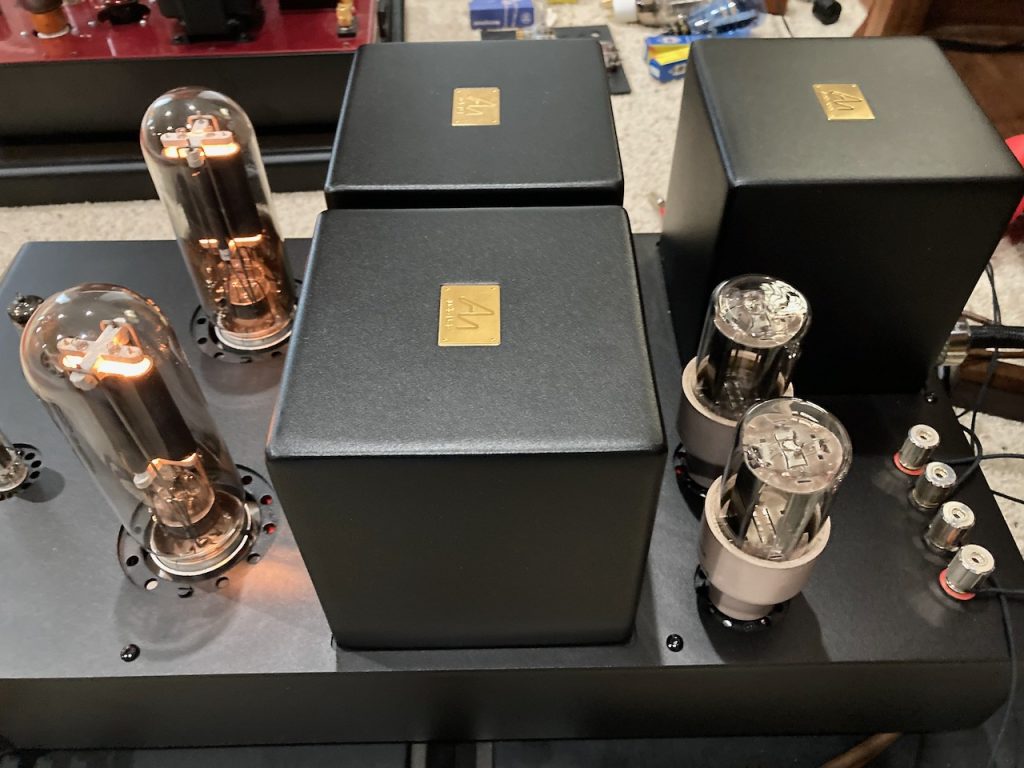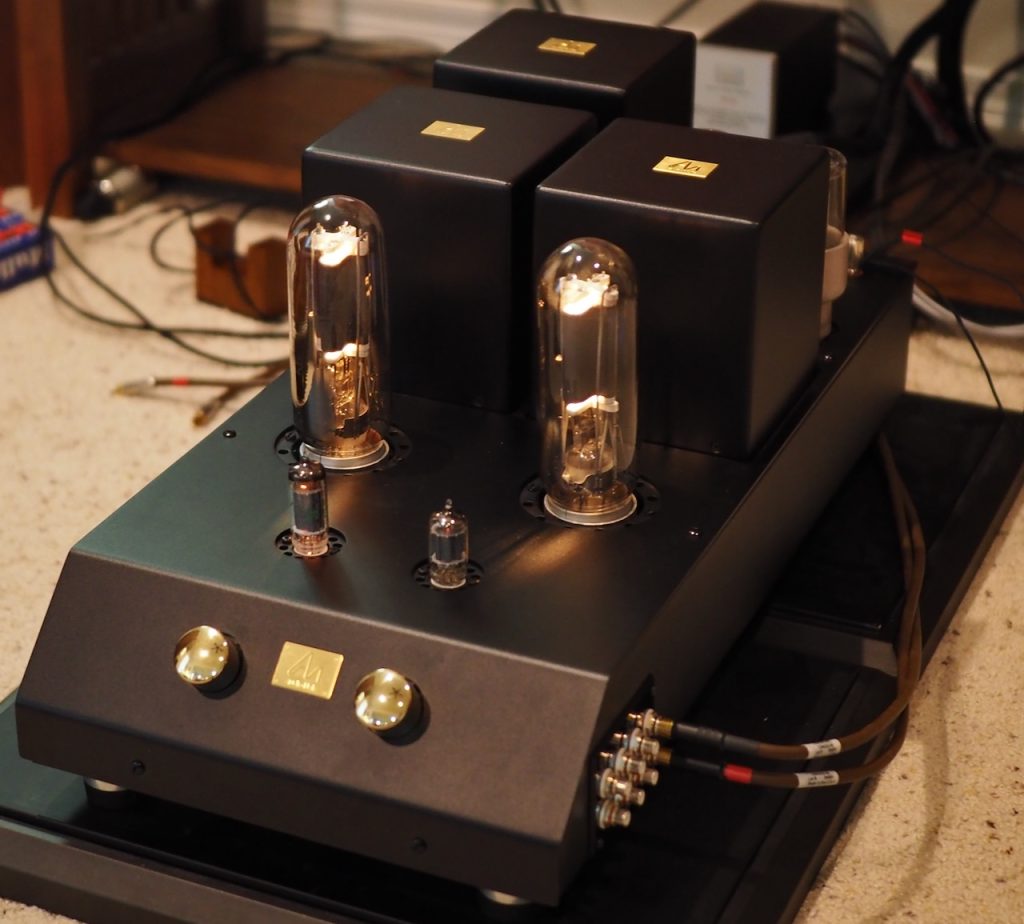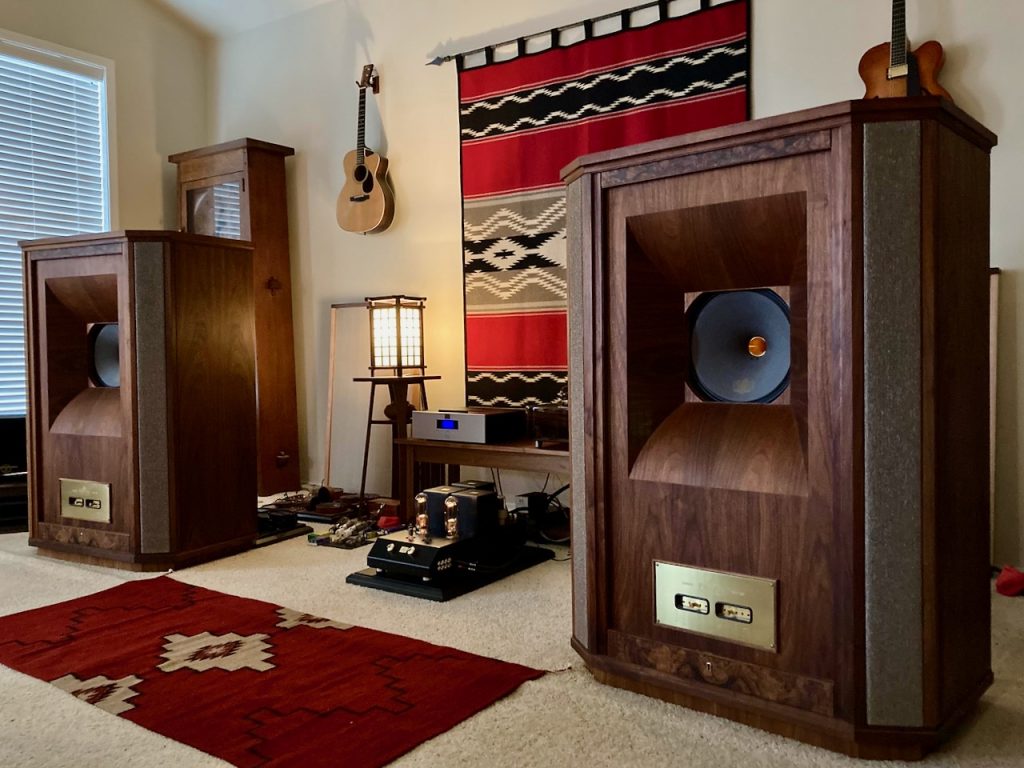Greetings friends, I hope you are all doing well, and please allow me to wish you a Happy Holiday Season!
The UPS driver knocked on my door early yesterday morning with a very special delivery, the Audio Note (UK) Tomei 211 SET integrated amplifier.
In the Audio Note (UK) integrated amplifier product line the Tomei is two steps up the line from the Meishu, and one step down from the top-of-the-line Ongaku.
As I removed the Tomei from its shipping carton, it was impressed upon me what a serious amplifier this is - it's a heavy handful to lift - as the Tomei's transformers are huge!
In the owner's manual, Audio Note (UK) recommends using more than one person to lift it out of its shipping container, and that's good advice.
As it is rather sizable, I placed the Tomei on two Acoustic Revive isolation platforms, and installed the tube complement:
- 2 x JAN CAHG 5R4WGB Chatham Electronics (USA made by Tung-Sol). Full wave rectifiers with a high peak inverse voltage rating. The bulb is shock mounted in a silicone rubber skirted base.
- 2 x GE 211 power triode tubes
- 1 x JAN GE ECC82 / 12AU7 / 5814a indirectly heated twin triode input tubes.
- 1 x GE 7044 is a twin triode designed for use in computers.
The Tomei came with a particularly impressive "All-American" tube complement that I couldn't help oohing and aahing over.
This was my first time seeing the impressive 5R4WGB full wave rectifiers that were made in the USA for Chatham Electronics by Tung-Sol. Everything about these rectifiers is impressive, from their shock mounted base to their thick hard-glass bulb.
Interestingly, the 5R4WGB full wave rectifiers are rated up to 60,000 feet for aerial applications. That's a good thing, as we are getting into rather lofty levels of design and performance with the Tomei.
The General Electric 211 power triode tubes were equally impressive. With their big T-18 bulb, they are 7 7/8 inches tall and 2 5/16 inches wide, and they have a jumbo 4-pin metal bayonet base.
There is a nice history article by Eric Barbour about the 211 & 845 triode power tubes in Vacuum Tube Valley Issue 9 for those who want to learn more.
The General Electric 7044 was a new vacuum tube to me. It has a 9-pin base, and a history that goes back to the 1950s when vacuum tubes were used in early IBM supercomputers, for example.
The General Electric ECC82 (12AU7) is used as an input tube in the Tomei. Personally, I love the sound of 12AU7 vacuum tubes as inputs, as they have a natural and transparent sound quality in circuits that I find to be particularly musical.
Vintage General Electric vacuum tubes were generally known for their large soundstage, prodigious midrange detail, and clear & detailed high-frequencies. Ditto for Tung-Sol.
The name "Tomei" is of Japanese origin, and means clean and/or transparent, which indeed fits right in with the reputation of this vintage USA vacuum tube complement.
After getting the vacuum tubes installed, I connected the Duelund DCA16GA speaker cables, Belden 8402 microphone cable interconnects, and Acoustic Revive Absolute power cable to the Tomei, which is what I use to connect the Triode Lab 45 EVO SET integrated amplifier to my audio system.
I'll be fitting up the full Audio Note (UK) suite of silver speaker cables and interconnects that are intended for the Tomei shortly, as I've found that Audio Note (UK) components typically are at their best with their own cables as that is what they are voiced with.
I performed my usual 'after delivery test run' to make sure the Tomei survived the tribulations of shipping and was operating correctly. It was.
This isn't a 'first listen' report, but I'll tell you what, even without its optimum silver Audio Note (UK) cable set, the Tomei was really sounding spectacular playing CDs from the Audio Note (UK) CD 5.1x CD player. An extremely musically natural and liquid presentation, utterly transparent, remarkably resolving, dynamic, and very engaging to listen to music with.
I felt audio lust bumps popping up all over my body at my first listen to the Tomei in my audio system. My first impressions are very, very, positive. I'll tell you what, the Tomei is an integrated amplifier you really need to get out and hear for yourself, if at all possible, as it is really something special.
The Tomei shares the circuit design of the ultra-exclusive Ongaku, and is rated at 20 watts per channel.
The Tomei meets all of the Audio Note (UK) Level 4 criteria: pure Class A operation, zero negative feedback, single-ended output stage, valve rectification, directly heated triode operation, and all of the proprietary materials and components that go into its build (tantalum resistors, foil capacitors, and in-house designed and manufactured copper/silver wired output transformers).
After I get the Audio Note (UK) silver cable set installed, and get more listening time in with the Tomei, I'll writeup a more detailed 'first listen' report about it for you.
Then, after we get into the New Year, I'll be asking Audio Note (UK) amplifier design wizard, Andy Grove, if he would tell us a little more about the Tomei - the 'inside scoop' so to speak - like he did for the Meishu, so I'll be looking forward to hearing what Andy has to say.
A huge "Thank you!" to Peter Qvortrup for sending the Tomei for me to listen to, and to tell you all about here at Jeff's Place and Positive Feedback.
That's all for now. As always, thanks for stopping by, and may the tone be with you!
Wait! There was just a knock at the door, with the friendly DHL driver delivering another audio goodie! More soon!


































